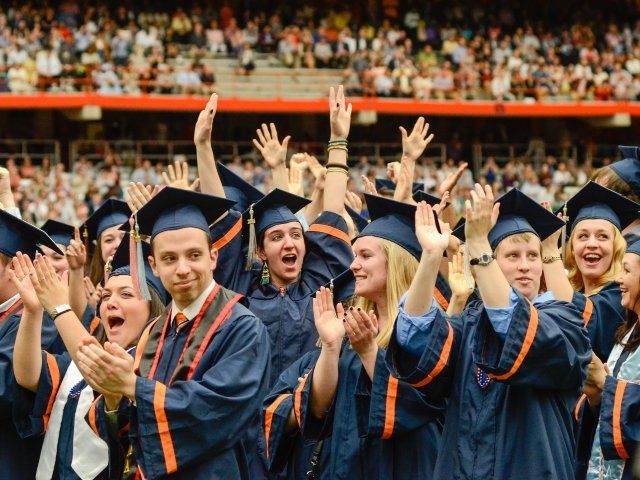On April 15, Tax Day, Americans have paid the federal government an estimated $1.477 trillion–a slightly higher figure than the total value of outstanding student loans.
Five days ago, the St. Louis Federal Reserve published a report titled “Student Loan Delinquency: A Big Problem Getting Worse?” The Fed determined that of the nearly $1.3 trillion in non-bankruptcy-dischargeable student loans, the delinquency rate for students in repayment is over 27 percent. With tuition at the University of California and other top schools growing faster than inflation, student loan defaults are skyrocketing.
Prior published student loan reports have stated that the “30+ days delinquency rate for all student loans increased significantly over the past 10 years—from 11 percent to slightly above 17 percent.” But most analysts believed that the 77 percent of the increase over the period from 2004 and 2010 was uniquely due to the Financial Crisis.
Many of these analysts argued that the default rate growing to only 17 percent from the 15.8 percent in 2010 demonstrated that rise in student default rates was peaking.
But when the Fed researchers Juan M. Sánchez and Lijing Zhuthe Fed dug deeper, they determined that for student loans made from October to December 2010, about 45 percent of student loans were not in repayment. This implied that only about 55 percent of student loans for the period are in repayment.
Adjusting the delinquency rate “to consider that only a fraction of the borrowers have payments due,” the Fed report concluded that after all the expanded deferral programs, the student loans delinquency rate was actually 27.3 percent for all loans in repayment.
That means the delinquency rate rose from less than one in nine former students a decade ago to over one in four today. The Fed stated, “this level of delinquency is much higher than for any other type of debt (credit cards, auto loans, mortgages, and so on).”
In February, the New York Federal Reserve reported for the fourth quarter of 2014, the total amount of student loans substantially exceeded the amount of auto loans and credit card loans. Furthermore, student loan growth barely trailed mortgage lending expansion and was growing by over 50 percent more than autos and credit card loans.
Breitbart reported this month that rapid tuition growth at universities and colleges is directly related to the massive 160 percent expansion of government lending to vulnerable students over the last decade. With college debt only secured by hopes of better income in the future, student loans defaults are the new sub-prime lending crisis.
As an example, University of California tuition more than doubled in the last decade; about two-thirds of Californians now rate affordability at America’s largest public college system as poor. Despite increasing Federal Reserve concerns about default risks for student loans, the UC system still intends to raise tuition by 5 percent next year and about 21.5 percent over the next 5 years. This explains why the US Treasury estimated that at the end of the next decade, there could be over $3.3 trillion in student loans.
A university degree was once perceived as the social elevator to a higher net worth. But the Federal Reserve Bank of New York estimates that 40 million Americans have racked up an average of four loans with an outstanding net balance of $29,000 to obtain a college education.
President Obama two weeks ago announced the “Student Aid Bill of Rights: Taking Action to Ensure Strong Consumer Protections for Student Loan Borrowers.” He ordered his advisers to work on a solution to make student debt burdens become more bearable. But the President in 2010 ended a 45-year-old private sector loan program and turned lending approvals and collections over to the Department of Education. Student loan defaults now fall 100 percent on the backs of the taxpayers.

COMMENTS
Please let us know if you're having issues with commenting.